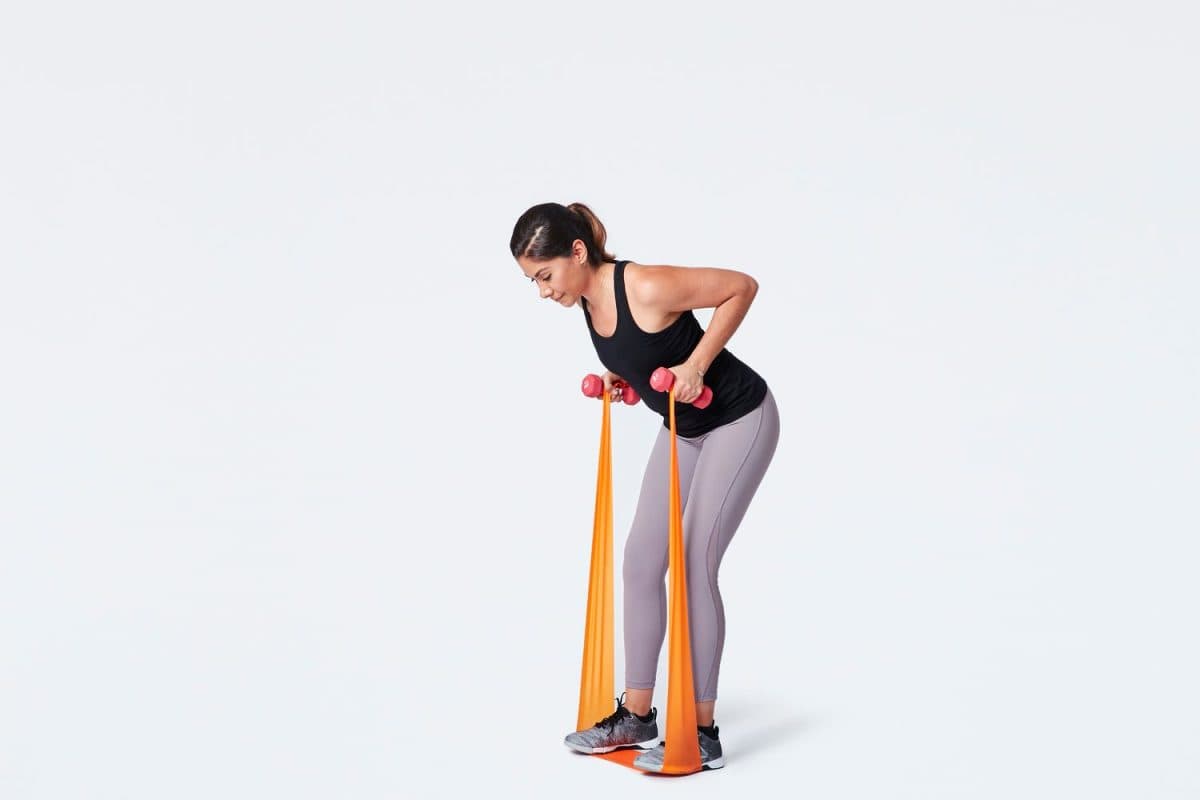resistance bands
Are Cheap Resistance Bands Effective?
So you’ve been thinking about adding some resistance bands to your workout routine, but you’re unsure if those budget-friendly options are really worth it. Well, you’re in luck because today we’re going to answer the age-old question: Are cheap resistance bands effective? We’ll dive into the pros and cons of these affordable fitness tools, giving you the lowdown on whether they can truly help you reach your fitness goals. Get ready to discover the truth behind the hype and find out if those inexpensive resistance bands are worth investing in.

Are Cheap Resistance Bands Effective?
When it comes to incorporating strength training into your fitness routine, resistance bands have become increasingly popular and affordable. But are cheap resistance bands actually effective? In this comprehensive article, we will delve into the various factors to consider when evaluating the effectiveness of cheap resistance bands. So, let’s explore the world of resistance bands together and find out if they can truly deliver the results you desire.
Understanding Resistance Bands
Definition and Purpose
Resistance bands are versatile pieces of exercise equipment made of elastic bands or tubing that provide resistance when stretched. They are commonly used for strength training, rehabilitation, physical therapy, and even as a tool for increasing flexibility. Their portable nature makes them convenient for home workouts or for use while traveling.
Types of Resistance Bands
There are several types of resistance bands available in the market, each offering different levels of resistance and functionality. The most common types include flat bands, loop bands, figure-eight bands, and tube bands. Flat bands are wide and thin, while loop bands are continuous loops. Figure-eight bands have a handle on both ends, while tube bands have handles attached to a rubber or fabric tube.
Benefits of Using Resistance Bands
Resistance bands provide numerous benefits that contribute to their effectiveness. Firstly, they offer a full-body workout, targeting multiple muscle groups simultaneously. Secondly, they allow for a wide range of exercises, accommodating various fitness levels and goals. Additionally, resistance bands improve muscular endurance, increase strength, enhance coordination and balance, and can even aid in weight loss.
How Resistance Bands Work
The working principle behind resistance bands lies in the principle of progressive resistance. As the band is stretched, the resistance increases, challenging the muscles throughout the entire range of motion. This progressive resistance helps to stimulate muscle growth and improve strength. Resistance bands also engage the stabilizer muscles, which are often neglected with traditional weight training exercises.
Factors to Consider
Intended Use and Fitness Goals
Before purchasing resistance bands, it is crucial to consider your intended use and fitness goals. Are you planning to use them for strength training, toning, or rehabilitation purposes? Different resistance bands offer varying levels of resistance, so knowing your goals will help you choose the right bands for your needs.
Resistance Levels
Resistance bands are available in different resistance levels, usually indicated by a color-coded system. Light resistance bands are suitable for beginners or individuals recovering from injuries, while heavy resistance bands are more challenging and suitable for experienced users. It is essential to choose resistance bands that match your current fitness level to ensure effectiveness.
Band Length and Width
The length and width of resistance bands can affect the types of exercises you can perform and the level of resistance experienced. Longer bands allow for a wider range of motion, while shorter bands provide more tension. Similarly, wider bands distribute the tension over a broader surface area, making them more comfortable to use. When selecting resistance bands, consider your height, exercise preferences, and the exercises you plan to perform.
Handle Design
Resistance bands with handles are popular due to their ease of use and versatility. Handles provide a secure grip, allowing you to perform a wide range of exercises comfortably. Some resistance bands come with interchangeable handles, allowing you to customize your workout experience. Consider the handle design and comfort level when choosing resistance bands, especially if you prefer exercises that require a firm grip.
Anchoring System
If you plan on anchoring your resistance bands to a fixed object for certain exercises, consider the type of anchoring system the bands come with. Some bands have a door anchor that enables you to secure them in a door frame, while others may have a specially designed anchor or attachment to secure them to a wall or pole. Ensure that the anchoring system is secure and compatible with your workout environment.
Quality vs. Price
The Price Range for Resistance Bands
Resistance bands are available at a wide range of price points, from budget-friendly options to high-end professional-grade bands. The pricing typically depends on various factors, including the brand reputation, materials used, design complexity, and additional features or accessories. Generally, cheap resistance bands can be found for under $10, while more expensive options can range from $20 to $50 or more.
Factors Influencing Price
Several factors influence the price of resistance bands. Higher-priced bands often use premium materials, such as natural latex or fabric, which offer enhanced durability and resistance. The complexity of the design, such as the inclusion of handles, specific textures, or multiple resistance levels, can also lead to higher prices. Additionally, reputable brands with established customer trust and positive reviews tend to price their resistance bands higher.
Quality Indicators
While price can be an indication of quality, it is not always a foolproof measure. To evaluate the quality of resistance bands, look for indicators such as the material used, construction quality, and customer reviews. High-quality bands are usually made from durable materials, have reinforced stitching or seams, and are free from any noticeable defects. Additionally, bands from reputable manufacturers often come with warranties or guarantees, further assuring their quality.
Cost-Effectiveness Analysis
When considering the effectiveness of cheap resistance bands, it is essential to analyze the cost-effectiveness of your purchase. Cheap resistance bands may not offer the same level of durability or resistance as higher-priced options. However, if your fitness goals and intended use are relatively simple or you are just starting your fitness journey, cheap resistance bands can still provide adequate effectiveness at a fraction of the cost.

Performance Comparison
Performance Metrics
To assess the effectiveness of resistance bands, it is crucial to consider various performance metrics. These metrics include resistance level accuracy, range of motion, consistency of resistance, and the overall comparison between cheap and expensive bands.
Resistance Level Accuracy
Resistance bands are designed to provide a specific level of resistance when stretched. More expensive bands often offer a more accurate and consistent resistance level, ensuring a smoother progression in your workouts. However, cheaper bands may not always provide the precise resistance level indicated. It is important to test the resistance of the bands before committing to a workout routine to ensure they provide the desired challenge.
Range of Motion
Resistance bands are known for accommodating a wide range of motion, allowing for both isolation exercises and compound movements. However, some cheaper bands may have limitations in terms of flexibility and elasticity, hindering your range of motion. Opting for higher-quality bands can often provide a more satisfying and effective workout experience with full freedom of movement.
Consistency of Resistance
An essential aspect of resistance bands’ effectiveness is the consistency of resistance throughout an exercise. Higher-quality bands maintain their resistance level consistently, providing a smooth and controlled workout experience. Cheaper bands may exhibit fluctuations in resistance, making it difficult to achieve consistent and progressive training. This inconsistency can potentially decrease the overall effectiveness of your workouts.
Comparing Cheap and Expensive Bands
While cheap resistance bands may not always match the performance of their more expensive counterparts, they can still be effective, especially for beginners or individuals with simple fitness goals. However, if you are seeking optimal performance and long-term durability, investing in higher-priced resistance bands may be a worthwhile choice.
Durability and Longevity
Material Quality
The quality of the materials used in resistance bands significantly impacts their durability and longevity. Cheap resistance bands are often made from lower-quality synthetic materials that may stretch or break more easily. In contrast, higher-quality bands are usually made from natural latex or fabric, which provide superior durability and resistance to wear and tear. Choosing resistance bands made from high-quality materials can contribute to their overall effectiveness.
Testing for Durability
To evaluate the durability of resistance bands, resistance tests can be performed. These tests involve stretching the bands to their maximum capacity repeatedly to simulate regular use. Higher-quality bands should be able to withstand numerous stretching cycles without showing signs of wear or deterioration. On the other hand, cheaper bands may exhibit signs of wear, tear, or stretching after only a few uses.
Manufacturing Standards
Resistance bands manufactured by reputable companies often adhere to higher manufacturing standards. These standards ensure the bands are produced with precise specifications, quality control measures, and strict testing protocols. Cheap resistance bands may not undergo the same level of scrutiny in their manufacturing process, potentially compromising their durability and overall effectiveness.
Typical Lifespan
The lifespan of resistance bands varies depending on several factors, including the frequency and intensity of use, the quality of the materials, and proper care and maintenance. Higher-priced bands tend to have a longer lifespan due to their superior construction and durable materials. Cheaper bands, while effective in the short term, may deteriorate more quickly and require more frequent replacements to maintain their effectiveness.

Material and Construction
Material Options
Resistance bands are available in a range of material options, each offering unique characteristics and benefits. The most common materials include natural latex, synthetic rubber, and fabric. Natural latex bands provide excellent elasticity and resistance, making them popular among fitness enthusiasts. Synthetic rubber bands, while usually cheaper, may lack the same level of elasticity and durability. Fabric bands offer a comfortable and non-slip grip, making them ideal for certain exercises and individuals with sensitive skin.
Band Construction
Resistance bands can have different construction methods, affecting their overall effectiveness. Bands can be single-layered or layered with multiple strands of material for added strength and resistance. More complex construction methods, such as braiding or weaving, enhance the bands’ durability and longevity. In comparison, bands with a simpler construction may be cheaper but may also be less effective, especially for intense or prolonged use.
Resistance Band Accessories
Various accessories can enhance the overall effectiveness of resistance bands. Accessories include door anchors, ankle straps, and carabiners, among others. These accessories provide additional versatility, allowing for a wider range of exercises and targeted muscle engagement. Higher-priced resistance bands often come bundled with accessories, providing greater value for money and expanding their potential uses.
Elastic Latex vs. Fabric Bands
When choosing resistance bands, one must weigh the benefits of elastic latex bands against fabric bands. Elastic latex bands are known for their elasticity and resistance, making them versatile and effective for strength training and rehabilitation exercises. Fabric bands, while providing less elasticity, offer a more comfortable and non-slip experience. Fabric bands are particularly helpful for exercises targeting the lower body, as they provide stability and prevent the bands from rolling up during use.
Effectiveness for Different Exercises
Upper Body Exercises
Resistance bands are highly effective for upper body exercises, targeting muscles such as the chest, back, shoulders, and arms. For chest exercises, resistance bands can be used to simulate push-ups, chest presses, and flyes. Back exercises can range from bent-over rows to lat pulldowns, while shoulder exercises can involve overhead presses or lateral raises. Arm exercises include bicep curls, tricep extensions, and many more. The versatility of resistance bands allows for a comprehensive upper body workout.
Lower Body Exercises
Resistance bands are equally effective for lower body exercises, engaging muscles in the legs, hips, and glutes. Squats, lunges, and hip thrusts can provide a challenging lower body workout when combined with resistance bands. Bands can also be used to target specific muscles, such as the gluteus medius or adductors, through lateral walks or clamshells. Adding resistance bands to lower body exercises increases the workload and promotes muscle development.
Core and Abdominal Exercises
Resistance bands can assist in developing a strong and toned core. Exercises such as planks, Russian twists, and seated twists can be intensified by using resistance bands. Bands can add an element of instability, engaging the core muscles further during these exercises. The tension provided by the bands challenges the abdominal muscles, enhancing their strength and definition.
Physical Therapy and Rehabilitation
Resistance bands are highly effective in physical therapy and rehabilitation settings. They provide a low-impact option for individuals recovering from injuries or surgeries. Physical therapists often use resistance bands to aid in restoring strength, flexibility, and range of motion after joint replacements, muscle strains, or fractures. The controlled resistance provided by the bands allows for gradual progression and targeted muscle activation during the rehabilitation process.

Risk of Injury
Importance of Proper Form and Technique
Like any exercise equipment, resistance bands must be used with proper form and technique to prevent injuries. Incorrect form can lead to imbalanced muscle development or strain on joints and ligaments. It is crucial to understand the correct execution of exercises and follow proper body alignment to ensure the effectiveness and safety of your workouts. Consulting with a fitness professional or watching instructional videos can help you learn the correct form when using resistance bands.
Potential Dangers of Faulty Bands
While resistance bands offer a low-impact workout option, there are potential dangers associated with using faulty or damaged bands. Cheap resistance bands made from inferior materials may break or snap during use, causing injuries or accidents. Inspecting your bands regularly for any signs of wear, stretching, or tears is essential for preventing any potential dangers. If you notice any damage, it is best to replace the bands immediately to avoid any risk of injury.
Safety Precautions
When using resistance bands, several safety precautions should be followed. Firstly, ensure that you have adequate space to perform exercises without any obstacles. Secondly, inspect the bands for any defects or damage before each use. It is also recommended to start with lighter resistance bands and gradually progress to heavier resistance levels, especially for beginners. Lastly, listen to your body and avoid overexertion or pushing beyond your limits, as this can increase the risk of injury.
Choosing the Right Resistance Level
Choosing the appropriate resistance level is crucial for both effectiveness and safety. Starting with a resistance level that is too high can put excessive strain on your muscles and joints, potentially leading to injury. Conversely, using a resistance level that is too low may not provide the necessary challenge for muscle growth and strength development. It is recommended to start with a lighter resistance level and gradually increase as your fitness level improves.
User Reviews and Feedback
User reviews and feedback can serve as valuable insight into the effectiveness of cheap resistance bands. Many online platforms allow users to rate and review resistance bands, providing real-life experiences and opinions. When considering purchasing cheap resistance bands, it is worth reading user reviews to gauge their overall effectiveness, durability, and value for money. However, remember that individual experiences may vary, and user reviews should be taken into consideration alongside other factors.

Conclusion
In conclusion, cheap resistance bands can indeed be effective, depending on your fitness goals, intended use, and individual preferences. When selecting resistance bands, it is essential to consider factors such as intended use, resistance levels, band length and width, handle design, and anchoring system. Although cheap resistance bands may not always match the performance and durability of more expensive options, they can still deliver satisfactory results, especially for beginners or individuals with simple fitness goals.
While higher-priced resistance bands often offer better durability, resistance accuracy, and performance consistency, their cost may not always be justifiable for everyone. It ultimately comes down to personal preferences, budget constraints, and the level of performance you seek. By considering the factors mentioned in this article and making an informed decision, you can choose cheap resistance bands that are effective and suit your needs.
So, whether you opt for cheap resistance bands or invest in pricier options, incorporating resistance band exercises into your fitness routine can undoubtedly contribute to improved strength, endurance, and overall fitness. Embrace the versatility and convenience of resistance bands, and enjoy the countless benefits they provide on your fitness journey.

